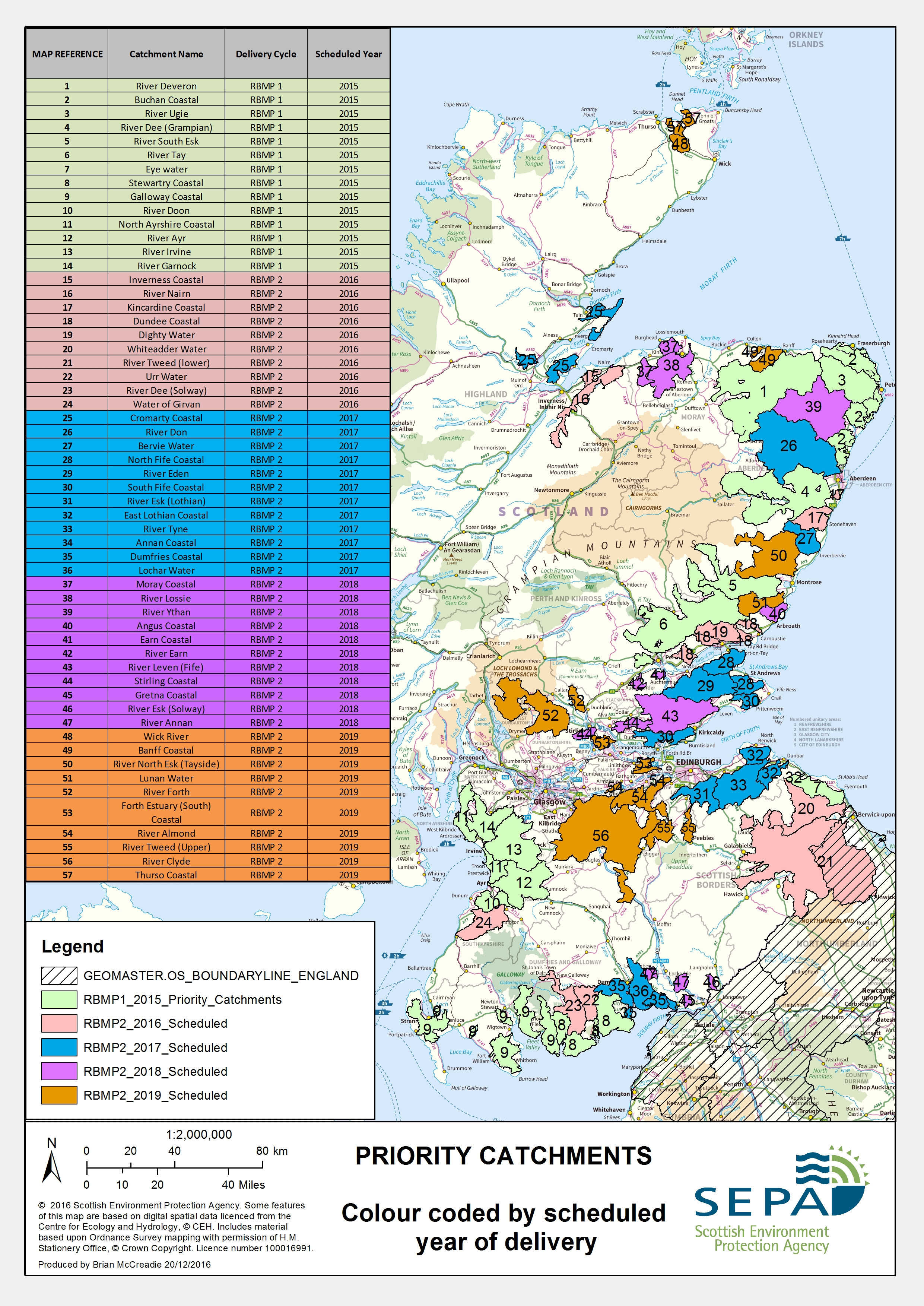Scotland's Water
“Scotland's water is amongst the best in Europe, with over 60 per cent of water bodies already of good or better status” - Scottish Government, 2010.
Rivers, lochs and groundwater provide all our drinking water and the water farmers need to grow our food. Water is still at the heart of the economic success for many of our rural towns and villages and our world-renowned whisky and fish farming industries depend on its high environmental quality.
Our waters support a great diversity of wildlife and a significant number are identified as protected areas because of their importance for the conservation of internationally rare or endangered species.
Some of the best salmon runs in the UK are found in our rivers and many of our best-known landscapes are associated with water. In short, our water environment is an integral part of Scotland's cultural fabric.
Scotland’s water quality is generally good and water management has led to huge improvements in water quality over the last 50 years. However, diffuse pollution is now the largest source of pollution in Scotland’s waters and we need to work together across all sectors to both protect and improve water quality.
Scotland's Priority Catchments & What to expect from a Priority Catchment Inspection
As part of Scotland’s targeted approach to reduce pollution risk, work is underway in a number of ‘priority catchments’. The priority catchments contain some of Scotland’s most important waters for conservation, drinking water, bathing and fishing, but they are also at heightened risk from diffuse pollution pressures which will lead to poor water quality.
To find out if you are in a diffuse pollution priority catchment, please check the downloadable map below.
The rural diffuse pollution work aims to deliver the objectives outlined in the River Basin Management Plans (RBMPs) for the Scotland river basin district 2015 – 2027. SEPA and other organisations are working with landowners (farmers, foresters, amenity land holders) to reduce pollution risks.
It is not just pollution; there are other pressures on waterbodies. These include; flooding, removal of water (abstraction), non-native plant species out-competing our natural riverside plants and morphological change (morphological change is about the alteration to the physical habitat of a water body: i.e. the width, depth and structure which could affect the ecological quality of the watercourse).
SEPA has appointed dedicated priority catchment coordinators to investigate the issues each catchment faces and liaise with local land managers to implement the measures through a series of farm visits, workshops and events in the identified catchments.
The priority catchment work is also part of the Diffuse Pollution Management Advisory Group (DPMAG) Implementation Plan.
The videos to the right explain what farmers can expect from a diffuse pollution priority inspection from SEPA.

